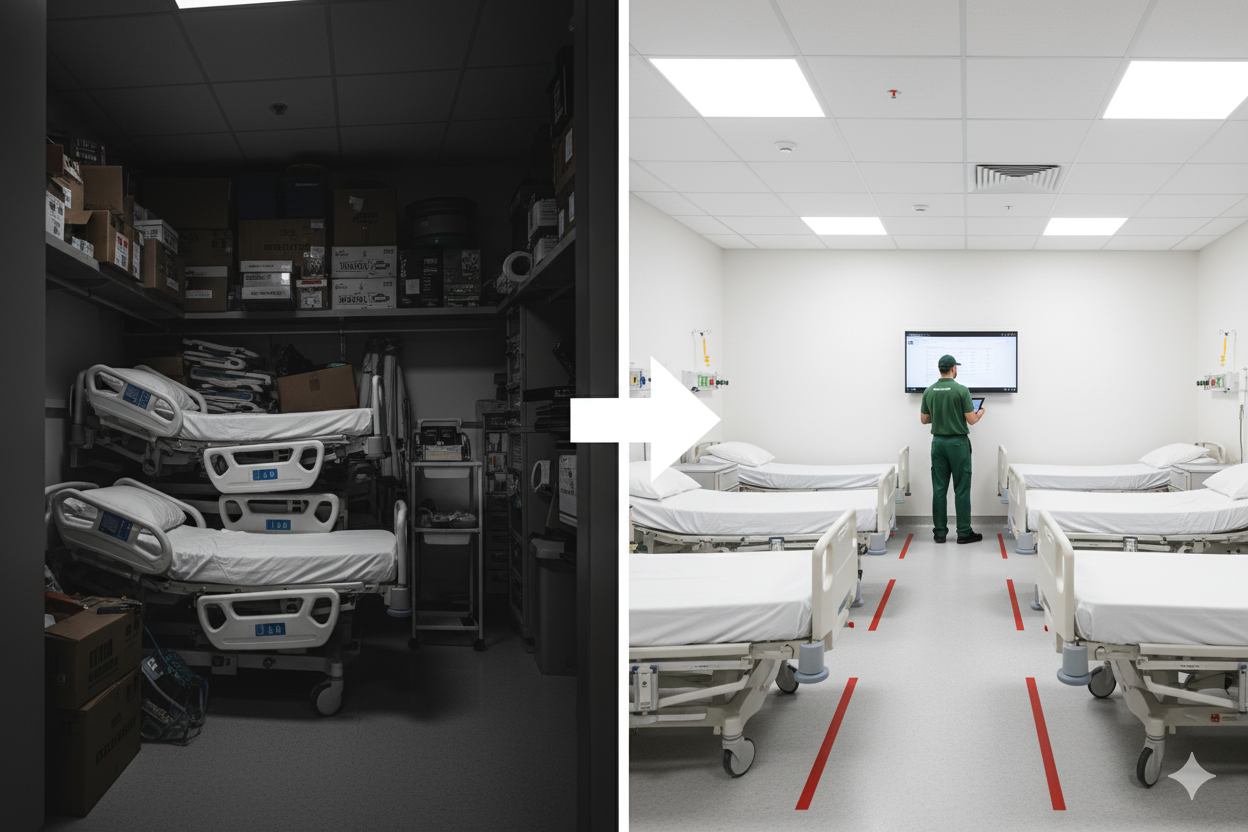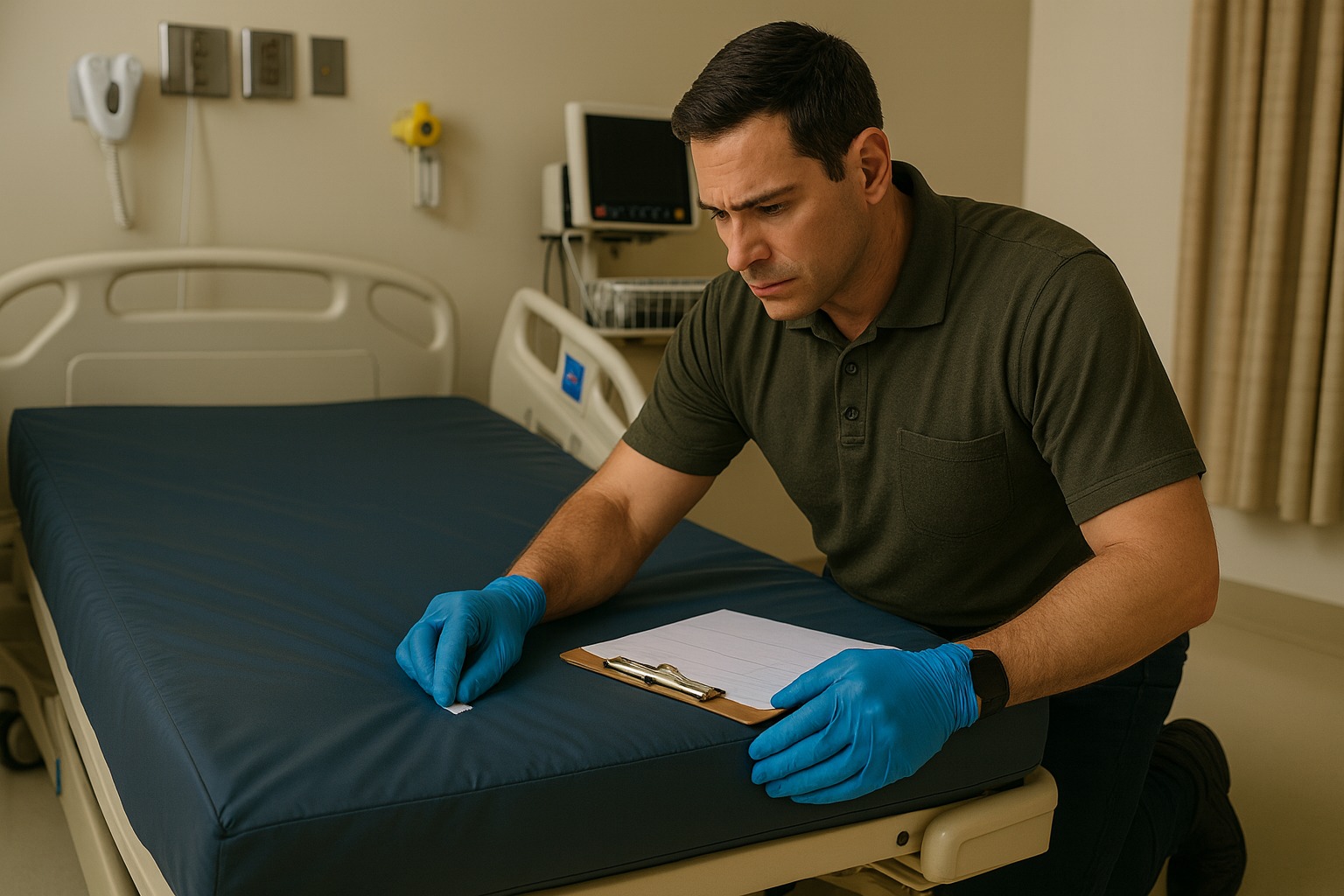
Introduction In hospital settings, where the primary focus is on patient care and critical medical procedures, the proper use of hospital beds and stretchers often gets overlooked. Misuse and abuse of these crucial pieces of equipment not only lead to significant maintenance costs but also pose risks to patient safety. This article explores the common types of misuse and abuse that hospital beds and stretchers endure, the damages that result, and how targeted training and maintenance programs can substantially mitigate these issues.
Common Types of Misuse and Resulting Damage
Improper Handling of Beds and Stretchers The movement of beds and stretchers within a hospital is a routine activity, yet it’s frequently the source of equipment damage. For instance, cords and nurse call systems are often ripped from walls or severed when beds are moved without securing these attachments. Side rails and bed frames also suffer when used improperly, such as using the bed’s head-up feature to assist patients in transitioning from sitting to standing, which can bend the frame and damage the motor assembly. Similarly, excessive pressure or weight on side rails can lead to detachment or breakage, compromising patient safety and equipment functionality.
Storage Issues Storage practices also contribute to the wear and tear of hospital beds. Commonly, miscellaneous medical equipment is stored under beds during patient transport, leading to damage when beds are adjusted without prior removal of these items. Furthermore, when hospital beds are crammed into storage rooms and hallways without adequate clearance, the beds can collide with each other, causing additional damage.
Operational Negligence Operational mishaps like running over cords or crashing into walls are frequent in busy hospital environments. These accidents not only damage the beds but also pose safety hazards. Proper operational training can prevent such occurrences by educating staff on the importance of checking for obstructions and securing all parts of the bed before moving it.
Hospital Bed Misuse and Abuse Solutions
User and Transporter Training To combat these challenges, comprehensive training for hospital staff, particularly those in nursing, environmental services (EVS), and transportation, is crucial. This training covers correct bed operation techniques, emphasizes the importance of removing objects from underneath beds before adjustments, and teaches effective navigation through hospital spaces to avoid collisions.
Monitoring and Review At Emeritus, we prioritize high standards in hospital bed management through effective monitoring and review processes. Our systems track misuse or abuse of beds, helping us identify patterns and specific problem areas for targeted interventions. These insights are crucial during our quarterly business reviews, where we analyze trends and adjust training programs and maintenance protocols to meet the evolving needs of each hospital.
These reviews also foster open communication between Emeritus and hospital administrations, ensuring our strategies remain aligned with the hospitals’ operational needs and safety standards. This collaborative approach not only addresses immediate equipment issues but also aids in long-term improvements in patient care and hospital efficiency. Through continuous monitoring and proactive adjustments, Emeritus enhances the effectiveness of hospital bed management.
Bed Storage Solutions Emeritus offers innovative bed storage solutions designed to optimize space and protect hospital beds from damage when not in use. Recognizing the challenges hospitals face with limited storage areas, our solutions ensure that beds are stored efficiently and safely, preventing unnecessary collisions and wear. By arranging beds in a manner that maximizes space without compromising accessibility, Emeritus helps healthcare facilities maintain the integrity and readiness of their essential equipment. This approach not only extends the lifespan of hospital beds but also enhances overall operational efficiency by keeping beds in excellent condition, ready for immediate use when needed. These storage solutions are tailored to meet the specific needs of each healthcare facility, providing a practical and effective system to manage bed inventories effectively.
Ture Partnership The financial implications of bed and stretcher misuse are considerable, encompassing repair costs, part replacements, and sometimes complete equipment replacements. Emeritus’s Bed Maintenance 2.0 program uniquely covers the costs of labor and travel for repairs, significantly alleviating the financial burden on healthcare facilities by requiring them to only cover the cost of parts.We do this because we are committed to bringing down the costs of misuse and abuse by offering training and tracking misuse so the root cause of the issue can be addressed.
Conclusion
The misuse and abuse of hospital beds and stretchers, though often underestimated, have profound implications for healthcare facilities in terms of costs and patient safety. By implementing detailed training programs for staff and adopting comprehensive maintenance strategies that include misuse tracking, hospitals can greatly reduce these negative impacts. Emeritus’s proactive approach not only extends the life of hospital equipment but also ensures the highest standards of patient care and safety are maintained. With strategic partnerships and a commitment to ongoing improvement, the hidden costs associated with equipment misuse can be effectively managed, benefiting both healthcare providers and their patients.








